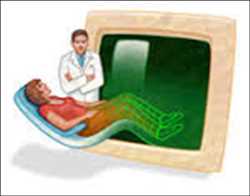Telemedicine Simulation App With Virtual Mobile Medical Training Started By EMS

Recently, Education Management Solutions (EMS)—a chief developer of simulation management technologies—revealed an innovative integrated simulation education platform that eliminates the obstacles, preventing data sharing between LMS (simulation-based learning management systems) and LMS tools related to global higher education and patient safety such as Canvas®, Blackboard®, and Direct2Learning®. The new SIMULATIONiQ™ base supports seamless single user commitment, which allows fusion of data from practical simulation exercises across higher educational learner performance systems. The integrated platform also fuses online training toolsets and virtual gaming with a traditional simulation LMS. It offers similar high-grade operational management and efficiency and is noticed recently about the use of for hands-on and mannequin-based simulation training, to augmented and virtual reality simulation programs. The rapidly increasing urgency for telemedicine training and skilled telemedicine clinicians prompted the SIMULATIONiQ platform to completely facilitate endways live practices for telemedicine skills throughout multiple disciplines.
Education Management Solutions is about to reveal a brief description at advanced level including training platform at the International Meeting on Simulation in Healthcare (IMSH) to be held in San Antonio.
North Dakota policy-makers are trying to pass a revised telemedicine bill that would permit healthcare firms in the state to generate a doctor-patient bonding with new patients with the help of asynchronous technology.
Last week, the state council collectively opted to pass the revised bill, SB 2094, passing the decision of the law implementation to the House. If approved, healthcare providers could replace the personal examination of the new patients with either asynchronous or audio-visual telehealth technology.
The modification was forced partially due to the objections raised by several healthcare providers and telehealth industries like Teladoc, who believe that phone-based and online-linked care platforms should be available for customers and healthcare firms who can’t connect personally or even through a virtual visit service such as video call. Teladoc reported that in the previous year it has conducted around 1,500 telehealth visits in the state. Through asynchronous technology, its employer customers could roughly save $700,000 in healthcare costs per year.


